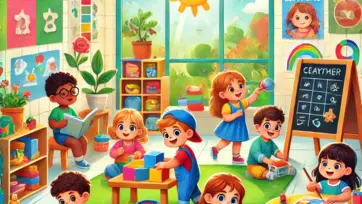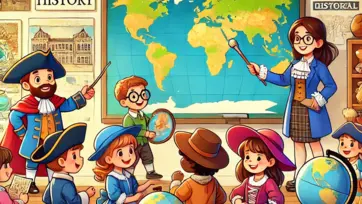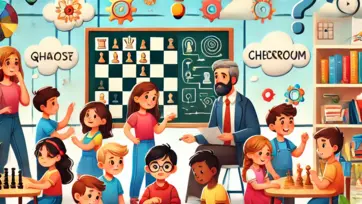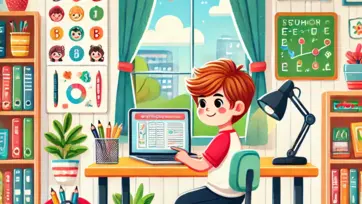Learning Through Play
Learning Through Play: The Key to Holistic Development in Children
Play is a universal language of childhood. Whether it’s building blocks, role-playing as superheroes, or simply running around in the backyard, play is more than just fun for children—it’s an essential part of their development. Learning through play is a concept backed by extensive research, proving that children acquire critical cognitive, social, and emotional skills when they engage in play-based activities. This approach is not only natural but also highly effective in fostering a love for learning and preparing children for future challenges.
The Science Behind Learning Through Play
Play is often considered the work of childhood. According to developmental psychologists like Jean Piaget, play allows children to explore, experiment, and make sense of the world around them. Through play, children actively engage their brains, stimulating neural connections that support learning and memory.
Cognitive Development
When children play, they solve problems, make decisions, and test hypotheses. For instance, stacking blocks teaches concepts like balance and gravity, while puzzles improve spatial awareness and critical thinking skills. Pretend play, such as running a “store,” helps children practice math skills like counting and fosters creativity by allowing them to imagine different scenarios.
Social and Emotional Growth
Play often involves interaction with peers, which helps children learn how to share, take turns, and resolve conflicts. These social skills are crucial for forming relationships and navigating group settings later in life. Additionally, play provides a safe environment for children to express emotions, build empathy, and develop self-regulation skills.
Physical Development
Gross motor activities like climbing, jumping, and running enhance physical strength, coordination, and balance. Fine motor skills are also refined through play activities like drawing, threading beads, or manipulating small objects.
Types of Play and Their Educational Benefits
Learning through play comes in various forms, each offering unique benefits to children:
Free Play
Free play is unstructured and driven by the child’s imagination. It allows children to explore their interests and express creativity without adult intervention. Examples include pretending to be a chef, creating art with crayons, or building a fort out of cushions. This type of play encourages autonomy and problem-solving.
Guided Play
In guided play, adults provide a framework or goal while allowing children to lead the activity. For example, an educator might introduce a game about colors or shapes but let the child decide how to play. Guided play balances structure with freedom, ensuring children learn while having fun.
Physical Play
Physical play includes activities like tag, hopscotch, or sports. These activities not only promote physical health but also teach teamwork, leadership, and perseverance.
Constructive Play
Constructive play involves building or creating something, such as assembling LEGO structures or crafting with clay. This form of play enhances cognitive skills, hand-eye coordination, and patience.
Role Play
Role-playing activities, such as pretending to be a teacher, doctor, or astronaut, help children explore different roles and perspectives. It also improves communication skills and fosters empathy.
Digital Play
In today’s digital age, educational apps and games offer new opportunities for learning through play. However, it’s crucial to balance screen time with traditional, hands-on activities.
The Role of Adults in Play-Based Learning
While children naturally gravitate toward play, adults play a pivotal role in enhancing the learning experience. Parents, teachers, and caregivers can support play-based learning in several ways:
Create a Play-Friendly Environment
Provide children with a variety of materials and spaces that inspire creativity and exploration. For example, setting up a corner with books, art supplies, and building blocks can encourage different types of play.
Observe and Participate
Adults should observe children’s play to understand their interests and developmental needs. Occasionally participating in play—without taking over—can help strengthen the bond between adults and children.
Ask Open-Ended Questions
During play, asking questions like “What do you think will happen next?” or “Why did you choose that color?” encourages critical thinking and communication.
Encourage Collaboration
Facilitate group play to help children develop teamwork and social skills. For example, organizing a cooperative building project can teach the value of working together toward a common goal.
Learning Through Play in Educational Settings
Many educational frameworks, such as Montessori and Reggio Emilia, emphasize the importance of play in learning. Schools and early childhood programs can incorporate play-based learning in various ways:
Play Centers
Classrooms can feature play centers dedicated to different activities, such as a reading nook, a science experiment table, or a dramatic play area. These centers allow children to explore their interests while developing diverse skills.
Themed Activities
Teachers can design play-based activities around specific themes. For example, a theme on “space” could include building rockets, pretending to be astronauts, and learning about planets.
Outdoor Play
Outdoor environments provide endless opportunities for exploration and learning. Nature walks, gardening, or playing in sand and water can teach children about science and the natural world.
Play-Based Assessments
Instead of traditional testing, educators can use observations of play to assess a child’s developmental progress. For instance, a teacher might evaluate problem-solving skills by watching how a child navigates a puzzle.
The Long-Term Benefits of Learning Through Play
The skills children develop through play extend far beyond childhood. Here are some long-term benefits:
Lifelong Learning
Play fosters a love for learning by making it enjoyable and engaging. Children who associate learning with fun are more likely to pursue knowledge throughout their lives.
Creativity and Innovation
Creative play encourages out-of-the-box thinking, a skill highly valued in fields such as science, technology, and the arts.
Emotional Resilience
Play teaches children how to cope with challenges and setbacks, building resilience and adaptability.
Social Competence
The social skills gained through play—such as communication, empathy, and teamwork—are essential for building healthy relationships in adulthood.
Conclusion
Learning through play is a powerful tool for holistic child development. By engaging in various types of play, children acquire critical skills that prepare them for academic, social, and personal success. Parents, educators, and caregivers can enhance the benefits of play by creating supportive environments and participating thoughtfully. In a world that often prioritizes structured learning, it’s essential to remember that the best lessons often happen when children are simply playing. After all, play isn’t just an activity—it’s the foundation of lifelong learning and growth.








